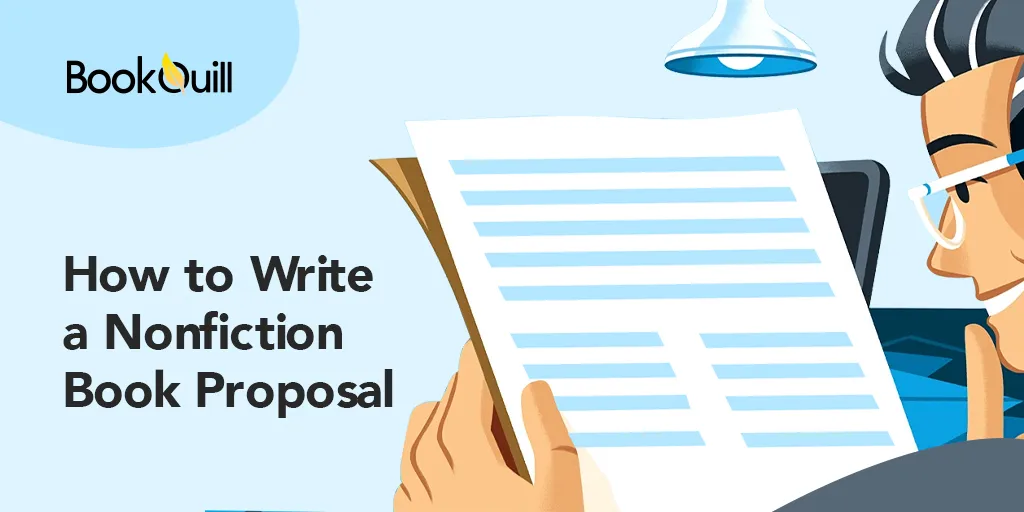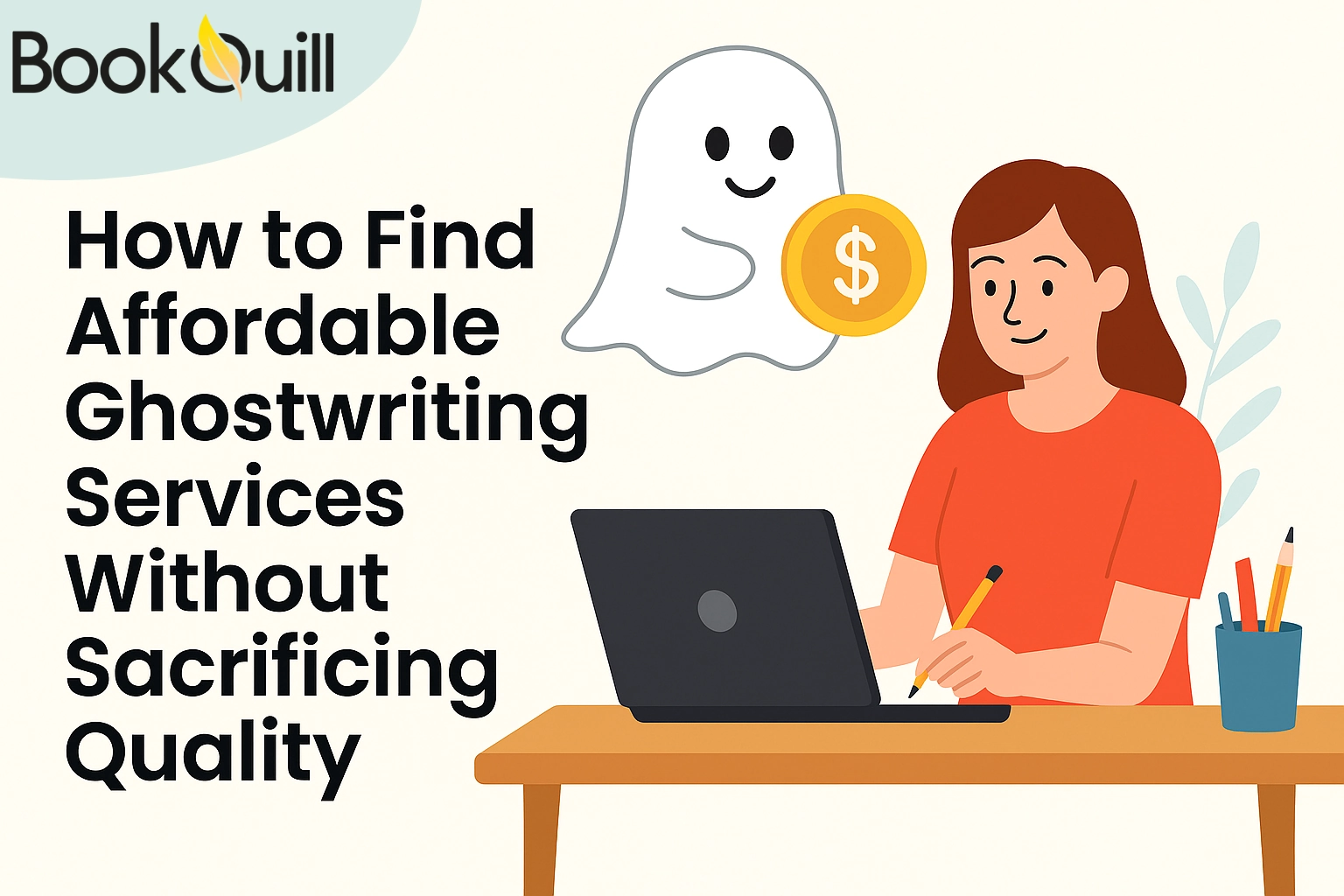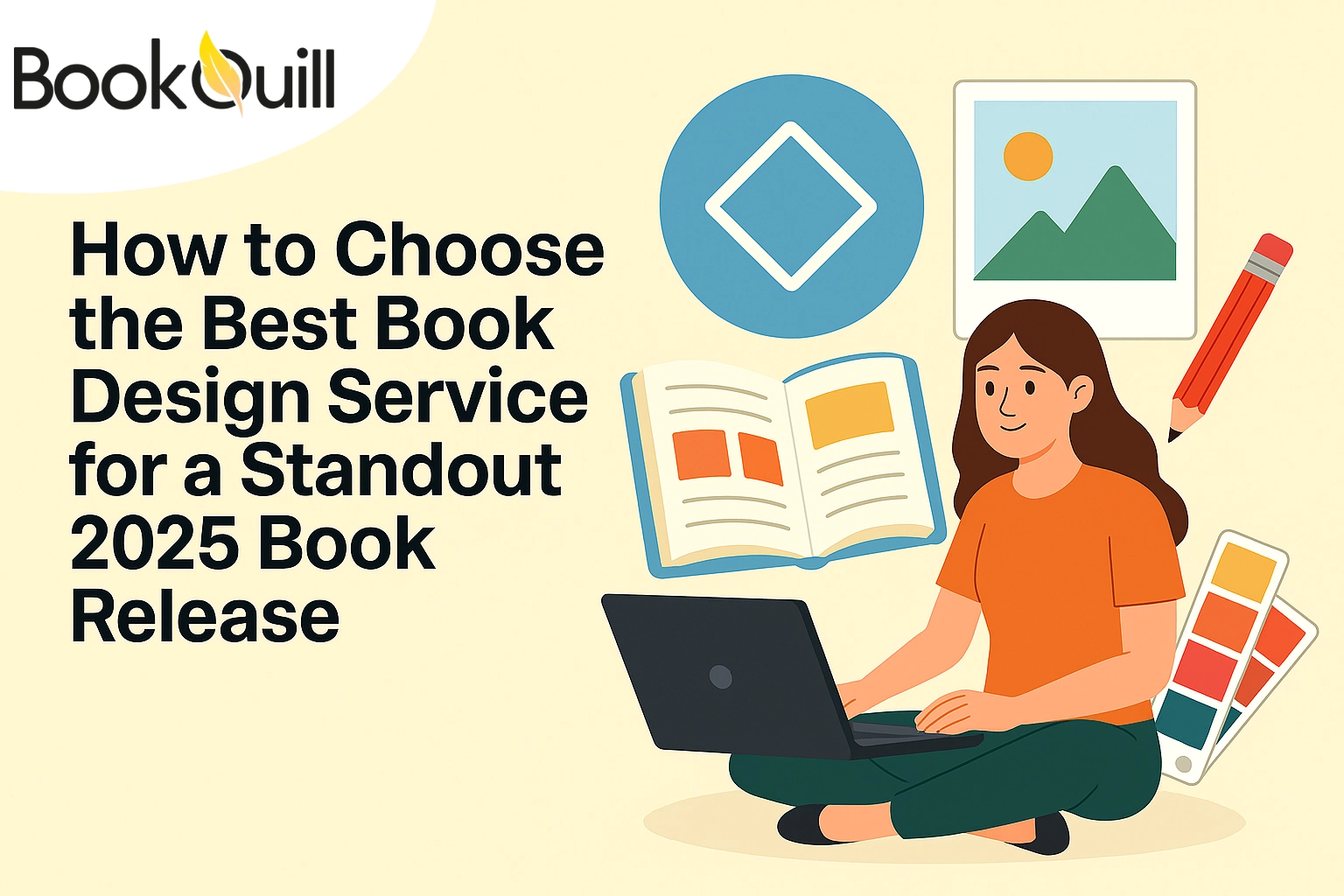Table of Contents
Explore Blogs
Trending on Ebook
How to Write a Non-Fiction Book Proposal (with Template)

You have a great book idea, you have written a few chapters but how do you convince a publishing house or literary to publish your book? This is where a book proposal can help you.
A book proposal is your chance to wow a literary agent or publisher and sell them your book. It contains information about you your book, how you plan to market it and much more. But how to write a book proposal.
Well, writing a book proposal is challenging, as a lot of research goes into it. Plus, it needs to be well-written and able to hook the publisher or literary agent so they can understand your book’s potential and are interested in helping you publish it.
In this blog, we break down the most important elements of a book proposal for a non-fiction book and give you a free nonfiction book proposal template you can use. If you’re an author looking for advice on writing a book proposal, BookQuill have you covered!
What Is a Book Proposal?
A book proposal is a document authors present publishers or literary agents to pitch their book and get it traditionally published. A nonfiction book proposal includes information about the book, author, target readers, book marketing plans, and some sample book chapters.
So, what does a book proposal look like exactly? Well, here are the main elements every book proposal have:
- Book Overview
- About the Author
- Marketing Plan
- Chapter outline
- Sample chapters
- Conclusion
Why Write a Book Proposal?
One question aspiring authors ask frequently is why there is a need for a nonfiction book proposal. Isn’t it better to write the book and show the publisher your work? Not quite. While that makes sense, it is not how the publishing industry works. Let us explain why publishers insist on a book proposal:
Reduces Publisher’s Risk
A proposal is proof that you have a plan on how to sell copies of your book. In your book proposal, you present book marketing plans, a book overview, insights on the target audience, and a case for how the book will sell because it is solving a problem, addressing an issue, or filling the market gap in some way.
Publishers need all this information to be able to pay you to write a book. Because simply a good idea is not enough to sell a book. It needs to be executed and marketed right for it to be a commercial success.
Shows Your Understanding of the Industry
Book deals are not cheap and publishers and literary agents are under pressure to produce results. A book proposal showcases the potential of a book to make sales hence has become an important part of the traditional publishing process. It has created a system that allows publishers to judge a book idea’s potential by judging an author’s research and understanding of the industry.
By understanding their target audience, researching competitors, and creating a marketing plan, authors can better understand the commercial potential of their ideas and convince publishers why their book is worth publishing. A book proposal provides a structured way of achieving this.
How to Write a Nonfiction Book Proposal
As promised, here’s a simple guide on how to write a nonfiction book proposal nonfiction.
Start the Proposal with a Book Overview
Book proposals start with a book overview which is like an elevator pitch. The idea behind a book overview is to hook the agent and get them interested in your project. They are typically a couple of pages long and include basic information about your book; the topic, theme, and target audience.
A book overview is an elevator pitch. Make it interesting, engaging, and full of useful information about the book.
Create an elevator pitch so interesting that the literary agent or publisher is hooked from the very first sentence. The truth is publishers and literary agents get many scripts every day. You need to seize any opportunity to get their attention otherwise it would be hard to stand out from the mix.
Make sure the language is clear and concise. Use short sentences to make the overview easy to read. While it is important to cover the book’s idea, the overview shouldn’t be just about that. Discuss how the idea benefits people, addresses a pain point, and solves a problem.
Many people have ideas but your idea will not be worth much to a busy editor or publisher if it doesn’t solve a problem. If it can solve a problem or address the pain points of the reader, your idea has commercial potential and is marketable.
Research Competition Titles
It is best to thoroughly research existing nonfiction titles that present a similar idea to yours. These are known as comp titles or comparative titles. Identify books that share a similar theme, target audience, or style. Analyze their success in terms of sales, reviews, and overall impact.
Research other nonfiction titles that present a similar idea. Analyze their sales, reviews, and overall impact. This would help convince a publisher there is a scope and audience for your book.
This proves to the publisher that your book has a scope and an audience. Furthermore, if you are presenting something novel that fills an industry gap, it sets your book apart from your competitors. It is an excellent way to gain the potential reader’s interest because you can add value to their life in a way other books have not yet.
Write an Author Bio
The author’s bio is about a page long section and provides an overview of your qualifications and expertise in the field. It would be logical to assume that the author’s bio features your achievements and the high points of your life, but that is not the case. An author’s bio should be written in a way that explains why you are the perfect person to write this book.
Talk about yourself as much as you want to in this section but make sure you stick to experiences relevant to this book. The idea is to establish your authority on the subject matter.
An author bio typically includes:
- Educational background
- Achievements and accolades
- Previous publications, speaking engagements, or other press
- Endorsements from industry leaders
- Author photo
You can include any previous publications, speaking engagements, or media appearances that showcase your visibility and credibility in your field. A well-written author bio can enhance your book proposal’s overall appeal.
Create a Marketing Plan
The marketing plan section is where you can win the publisher over by convincing them your idea has commercial potential. As discussed before, the publishers are not only interested in the content of your book but also in your ability to help market and sell it.
The truth is, most traditional publishing houses are terrible with marketing books. They don’t have platforms or email lists where they engage and build relationships with people. This means that there is no one waiting to buy the books they publish. Therefore, publishing houses are relying on you to have a plan to market your book.
Most traditional publishing houses are terrible at marketing books as they don’t have a relationship with readers. They rely on you to have a solid plan to market your book and sell copies.
A marketing plan shows your understanding of the promotional strategies needed to reach your potential readers. In the plan, include details on social media campaigns, speaking engagements, book signings, or any other promotional activities you plan to undertake.
Include a Chapter Outline of Your Book
In your proposal, provide a detailed chapter outline for your book. This shows that you have a clear roadmap for your book’s structure. The outline should have a chapter-by-chapter breakdown of the entire book. For each chapter, write the title, estimated word count, and key points covered in the chapter.
This section allows publishers to see the depth with which you have organized your content. A chapter outline allows the publisher to get an overview of the entire book’s content. It also serves as a roadmap for the writer during the writing process.
Provide Sample Chapters from Your Manuscript
This is another important section of your proposal. To give publishers a sense of your writing style and tone include some sample chapters in your proposal. Give your best shot at writing a highly engaging, informative, and captivating chapter. One or two chapters would do the trick.
These don’t have to be the first two chapters of your book. Take a look at the outline you created and pick the chapter you think would be most interesting for the editors. This way publishers can assess your writing style, the depth of your research, and the potential of your book to engage readers.
Finish with a Writing Timeline
Finish your book proposal with a brief section for the writing timeline. The writing timeline should clearly define milestones, and deadlines, and mention any potential challenges or hiccups that you might face during writing. The idea behind this section is to provide a realistic timeline in which you would be able to complete and subject the project to the publisher.
Nonfiction Book Proposal Template
Here’s a sample nonfiction book proposal to get you started:
| Page 1
BOOK TITLE |
Page 2-4
Book Overview |
Page 5
About The Author |
| Page 6-9
Marketing Plan |
Page 10-11
Chapter Outline |
Page 12-20
Sample Chapters |
| Page 21
Writing Timeline |
||
Final Word
Once you understand the purpose and process of writing a book proposal, it will not seem like a daunting task. Use this guide and the template we provided to craft your book proposal.
Remember, a book proposal is not meant to show the lengths of your artistic ability. It is meant to sell the publisher your idea by showcasing its commercial potential.
A book proposal can open doors to potential publishing opportunities and serve as a roadmap for your writing journey.
Frequently Asked Questions
What is the structure of a nonfiction book proposal?
A book proposal consists of a book overview, about the author, marketing plan, chapter outline, sample chapters, and a conclusion.
How long should a book proposal be?
A book proposal is typically between 20 to 70 pages. The book proposal length depends upon how long the sample chapters are. The proposal itself is usually 15 to 30 pages.
What is a nonfiction book proposal?
A nonfiction book proposal is a professional document that outlines your book idea, target audience, market potential, and credentials, used to pitch your book to publishers or literary agents.




